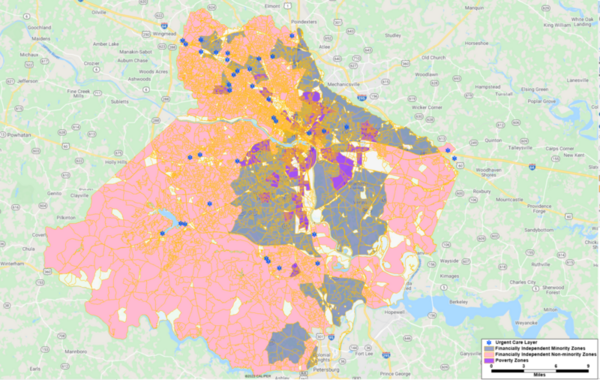Accessibility to urgent care services for disadvantaged populations: An analysis of healthcare disparities
(1) Mills E. Godwin High School, Richmond, Virginia, (2) Virginia Department of Transportation, Richmond, Virginia
https://doi.org/10.59720/23-074
Healthcare is important for an individual’s well- being as well as the social and economic health of the community. Due to COVID-19, healthcare has been even more crucial. In this study we analyzed urgent care facility accessibility for disadvantaged individuals in a large Virginian, United States urban area to discover potential healthcare disparities. We categorized census zones by the percentage of residing disadvantaged individuals using K-means clustering. In this study, a disadvantaged individual was defined as anyone who was impoverished or a minority. We put each zone into one of three derived groups: 1) Poverty, 2) Financially Independent (FI) minorities, 3) FI non-minorities. The census data counted minorities as non-Caucasian males. After reviewing previous research, we hypothesized that FI minority zones would have a longer travel time to urgent care facilities compared with the other two groups. We conducted network analysis in TransCAD to calculate the accessibility score during peak traffic hours, which is the travel time from each census zone to the nearest urgent care facility. The lower the travel time, the better the score. We conducted a one-tailed t-test that showed FI non-minority zones had the best accessibility score, then Poverty, and finally FI minority zones with the longest travel time. Most minorities resided in the city, which during peak traffic times is more congested than the suburbs, thus causing longer travel times and worse accessibility scores. Our analysis could be used to identify and spread awareness about healthcare disparities.
This article has been tagged with: